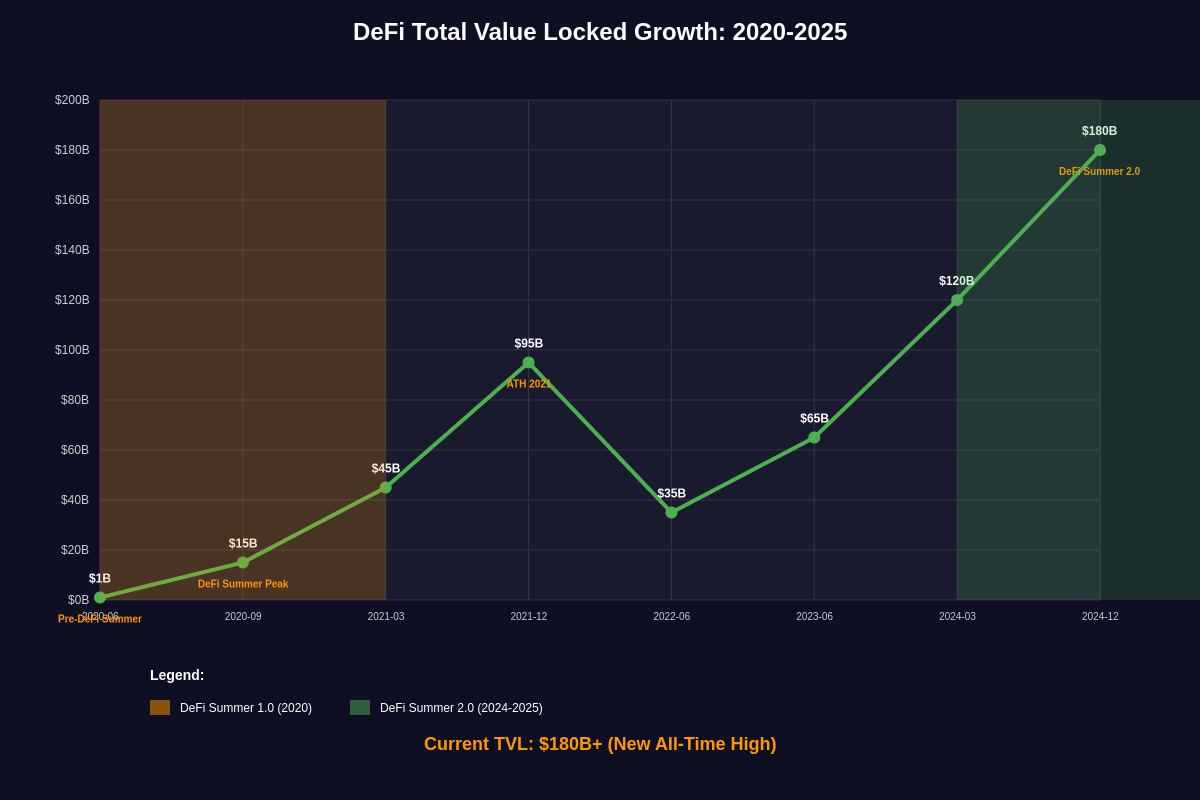
The DeFi Renaissance: A New Era of Financial Innovation
The decentralized finance ecosystem has entered an unprecedented phase of growth and maturation, marking what industry observers are calling “DeFi Summer 2.0.” This second wave of explosive growth has culminated in Total Value Locked across all DeFi protocols reaching new all-time highs, surpassing previous records and establishing DeFi as a permanent fixture in the global financial landscape. Unlike the speculative fervor that characterized the original DeFi Summer of 2020, this current expansion is driven by institutional adoption, improved infrastructure, and genuine utility that addresses real-world financial needs.
The Total Value Locked metric serves as the primary barometer for measuring DeFi’s growth and adoption. TVL represents the aggregate value of all cryptocurrencies deposited in DeFi protocols, including lending platforms, decentralized exchanges, yield farming protocols, and synthetic asset platforms. This metric has become the gold standard for assessing the health and trajectory of the decentralized finance ecosystem, providing investors and analysts with crucial insights into capital allocation trends and protocol performance.
Historical Context and the Evolution of DeFi
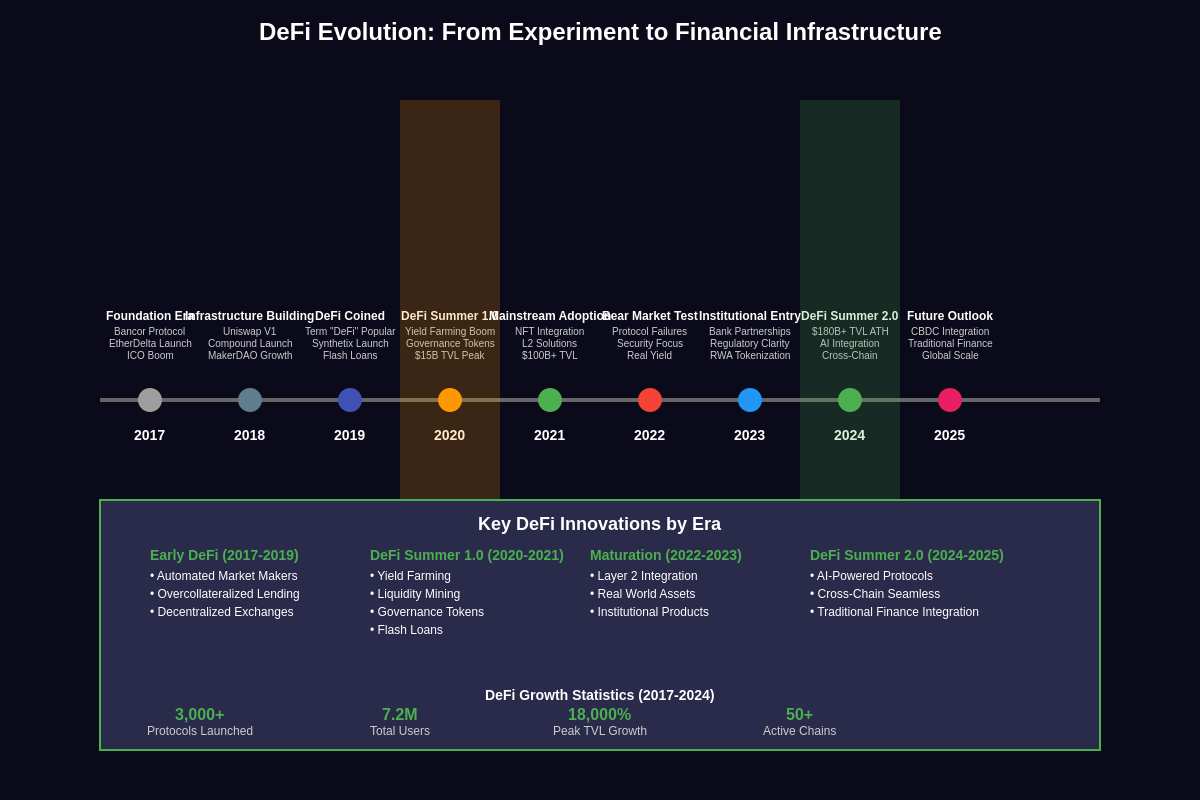
The journey to this milestone began with the original DeFi Summer of 2020, when yield farming and liquidity mining programs created a gold rush mentality that saw TVL explode from under $1 billion to over $15 billion in a matter of months. Protocols like Compound, Uniswap, and Yearn Finance became household names in the crypto community, introducing concepts like automated market makers and decentralized autonomous organizations to mainstream audiences. However, that initial surge was largely driven by unsustainable yield farming incentives and speculative trading rather than fundamental utility. Professional traders tracking DeFi token performance and market dynamics witnessed unprecedented volatility as the sector matured through multiple boom and bust cycles.
The subsequent bear market of 2021-2022 served as a crucial testing ground for DeFi protocols, separating sustainable projects from those built on shaky foundations. Many protocols with inflated token prices and unsustainable economics failed to survive the downturn, while others used the period to refine their offerings, improve security measures, and build more robust economic models. This consolidation phase was essential for the ecosystem’s long-term health, eliminating many of the speculative excesses while preserving the core innovations that make DeFi valuable.
Current TVL Milestone and Market Dynamics
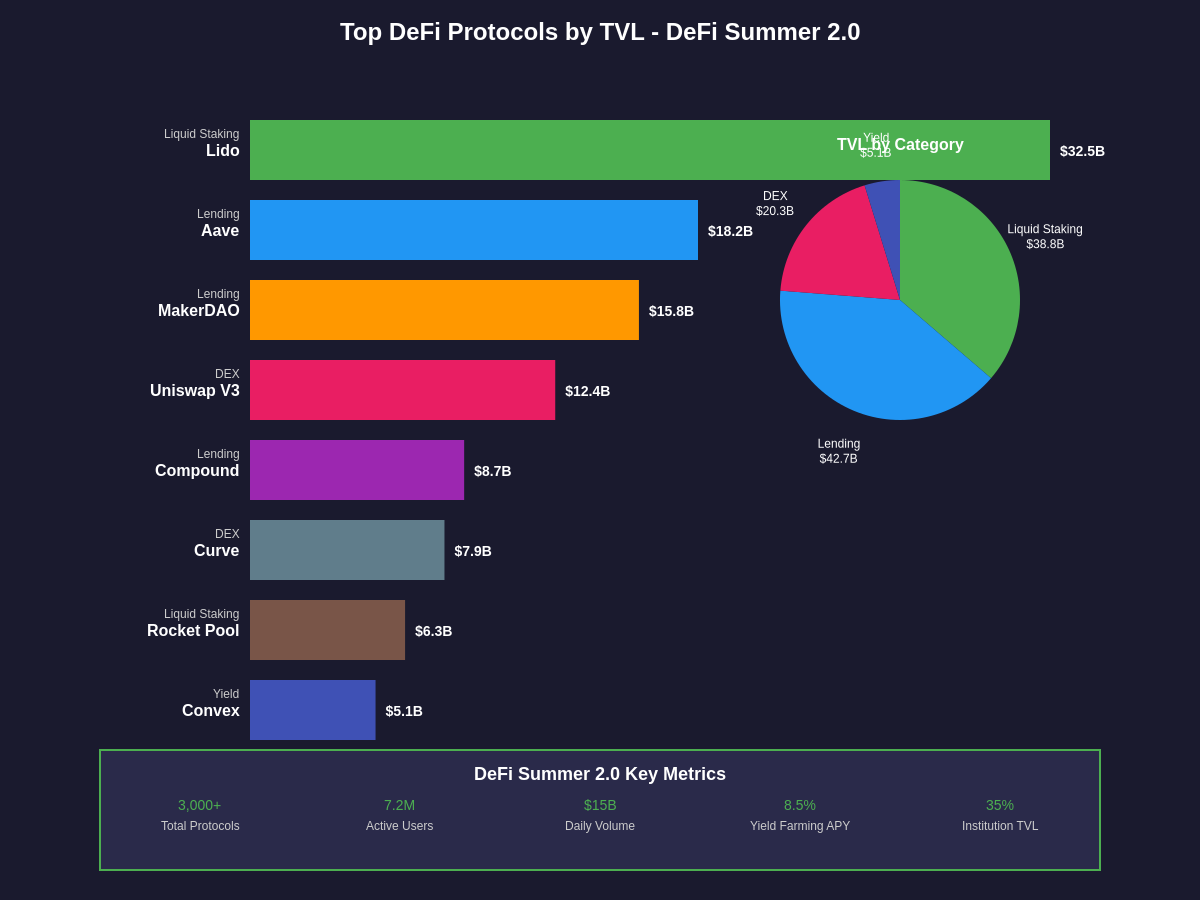
The recent achievement of new all-time highs in TVL represents a qualitatively different phenomenon from previous peaks. Current estimates place aggregate TVL across all chains at approximately $180 billion, with Ethereum maintaining its dominance while alternative layer-1 blockchains and layer-2 solutions capture increasing market share. This growth trajectory has been remarkably steady and sustainable, lacking the parabolic spikes and crashes that characterized earlier periods.
Ethereum continues to host the largest portion of DeFi activity, with protocols like Lido, MakerDAO, and Aave commanding billions in locked value. However, the multi-chain DeFi landscape has matured significantly, with Solana, Avalanche, Polygon, and Arbitrum hosting thriving ecosystems that contribute meaningfully to overall TVL growth. This diversification represents a healthy evolution toward a more resilient and distributed financial infrastructure.
Institutional Adoption and Mainstream Integration
One of the most significant drivers of DeFi Summer 2.0 has been the entrance of institutional players who were largely absent during the initial wave. Traditional financial institutions, including banks, hedge funds, and asset managers, have begun incorporating DeFi protocols into their operations, attracted by the efficiency gains and yield opportunities that decentralized finance offers. This institutional participation has brought professional-grade capital and risk management practices to the space, contributing to its overall stability and legitimacy.
Corporate treasuries have also begun experimenting with DeFi protocols as part of their cash management strategies. Companies are discovering that DeFi can offer superior yields compared to traditional money market instruments while maintaining reasonable risk profiles when properly implemented. This trend has been accelerated by the development of institutional-grade DeFi interfaces and compliance tools that address the regulatory and operational concerns of traditional finance.
The integration of DeFi protocols with traditional banking infrastructure has reached new levels of sophistication. Several major banks have announced partnerships with DeFi protocols to offer their customers access to decentralized financial services, while maintaining compliance with existing regulatory frameworks. These developments represent a fundamental shift in how traditional finance views decentralized protocols, moving from skepticism to active engagement and integration.
Protocol Innovation and Technical Advancement
DeFi Summer 2.0 has been characterized by significant technical innovations that address many of the limitations and challenges that plagued earlier iterations of decentralized finance. Layer-2 scaling solutions have dramatically reduced transaction costs and increased throughput, making DeFi accessible to a broader range of users who were previously priced out by high gas fees. Protocols like Arbitrum, Optimism, and Polygon have enabled complex DeFi operations to be executed at a fraction of the cost of Ethereum mainnet transactions.
Security improvements have been another crucial area of advancement. The numerous exploits and hacks that occurred during the early days of DeFi prompted the development of more sophisticated security practices, including formal verification, comprehensive auditing procedures, and bug bounty programs. Many protocols now undergo multiple security audits before launch and implement time delays for protocol upgrades to allow for community review and potential vulnerability discovery.
Smart contract composability has reached new levels of sophistication, enabling the creation of complex financial products that combine multiple protocols in innovative ways. Advanced yield optimization strategies and DeFi analytics have emerged that automatically allocate capital across multiple protocols to maximize returns while managing risk exposure. This composability has created network effects where the value of each protocol increases as more protocols are added to the ecosystem.
Lending and Borrowing Evolution
The lending and borrowing sector remains the cornerstone of DeFi activity, representing the largest portion of TVL across the ecosystem. Protocols like Aave, Compound, and newer entrants like Euler Finance have continued to innovate, introducing features like flash loans, isolated lending markets, and risk-adjusted interest rates that provide more sophisticated financial services than many traditional alternatives.
The introduction of real-world asset lending has opened entirely new categories of collateral for DeFi protocols. Platforms are now accepting tokenized real estate, commodities, and even traditional financial instruments as collateral for cryptocurrency loans. This expansion beyond purely crypto-native assets represents a significant step toward DeFi’s integration with the broader economy and traditional financial markets.
Institutional lending protocols have emerged as a distinct category, offering features specifically designed for corporate and institutional users. These platforms provide enhanced compliance features, institutional-grade custody solutions, and sophisticated risk management tools that meet the requirements of professional financial institutions. The growth in institutional lending has contributed significantly to the overall increase in TVL while bringing more stable, long-term capital to the ecosystem.
Decentralized Exchange Innovation
Decentralized exchanges have undergone remarkable evolution since the original DeFi Summer, with new models emerging that address the limitations of early automated market makers. Concentrated liquidity models, as pioneered by Uniswap V3, have dramatically improved capital efficiency while reducing slippage for traders. These innovations have made DEXs competitive with centralized exchanges for many types of trading activity.
The development of cross-chain DEX protocols has enabled seamless trading across different blockchain networks, eliminating many of the friction points that previously existed in multi-chain DeFi. Users can now trade assets across chains without the complex bridging processes that were previously required, significantly improving the user experience and expanding the available trading opportunities.
Order book-based DEXs have gained traction as an alternative to automated market makers, particularly for professional traders who require more sophisticated trading features. These platforms combine the benefits of decentralized settlement with the familiar interface and functionality of traditional trading platforms, bridging the gap between centralized and decentralized trading experiences.
Yield Generation and Staking Mechanisms
The landscape of yield generation in DeFi has matured considerably from the unsustainable farming rewards that characterized the original DeFi Summer. Current yield opportunities are increasingly backed by genuine economic activity and protocol revenue rather than token inflation, creating more sustainable returns for participants. Liquid staking protocols have emerged as a major category, allowing users to earn staking rewards while maintaining liquidity for their staked assets.
Ethereum’s transition to proof-of-stake has created enormous opportunities for liquid staking protocols like Lido, Rocket Pool, and Coinbase’s cbETH. These protocols collectively represent tens of billions in TVL and have become essential infrastructure for maximizing the utility of staked ETH. The success of liquid staking has demonstrated the market demand for solutions that allow users to participate in network security while maintaining capital flexibility.
Real yield has become a focal point for many protocols, with projects emphasizing revenue generation through actual economic activity rather than token emissions. This shift toward sustainable tokenomics has attracted more conservative investors who were previously wary of DeFi’s high but unsustainable yields. Market participants utilize sophisticated DeFi tracking and analysis tools to identify protocols with genuine revenue streams and sustainable competitive advantages.
Regulatory Clarity and Compliance Framework
The regulatory environment surrounding DeFi has evolved significantly, with many jurisdictions providing clearer guidance on how decentralized protocols should operate within existing legal frameworks. This regulatory clarity has been crucial for institutional adoption, as professional investors require clear compliance pathways before committing significant capital to DeFi protocols.
European markets have seen particularly progressive regulatory development with the Markets in Crypto-Assets regulation providing a comprehensive framework for digital asset operations. This regulatory certainty has encouraged European institutions to explore DeFi opportunities more aggressively, contributing to the overall growth in TVL and institutional participation.
The development of compliance-focused DeFi protocols has created new opportunities for institutional participation while maintaining the core principles of decentralization. These protocols incorporate features like identity verification, transaction monitoring, and regulatory reporting capabilities that allow institutions to participate in DeFi while meeting their compliance obligations.
Risk Management and Security Protocols
Risk management has become significantly more sophisticated in DeFi Summer 2.0, with protocols implementing multi-layered security measures and comprehensive risk assessment frameworks. Insurance protocols have evolved to provide coverage for smart contract risks, with platforms like Nexus Mutual and Cover Protocol offering protection against various types of DeFi-related losses.
The implementation of formal verification for smart contracts has become more common, with many protocols using mathematical proofs to verify the correctness of their code before deployment. This approach has significantly reduced the frequency of critical vulnerabilities and improved overall protocol security. Advanced auditing practices, including multiple independent security reviews and ongoing monitoring, have become standard practice for serious DeFi protocols.
Decentralized risk management protocols have emerged that provide real-time assessment of various DeFi positions and protocols. These systems use on-chain data and sophisticated algorithms to evaluate risk levels and provide early warning systems for potential issues. The development of these risk management tools has made DeFi more accessible to risk-conscious investors and institutions.
Multi-Chain Ecosystem Development
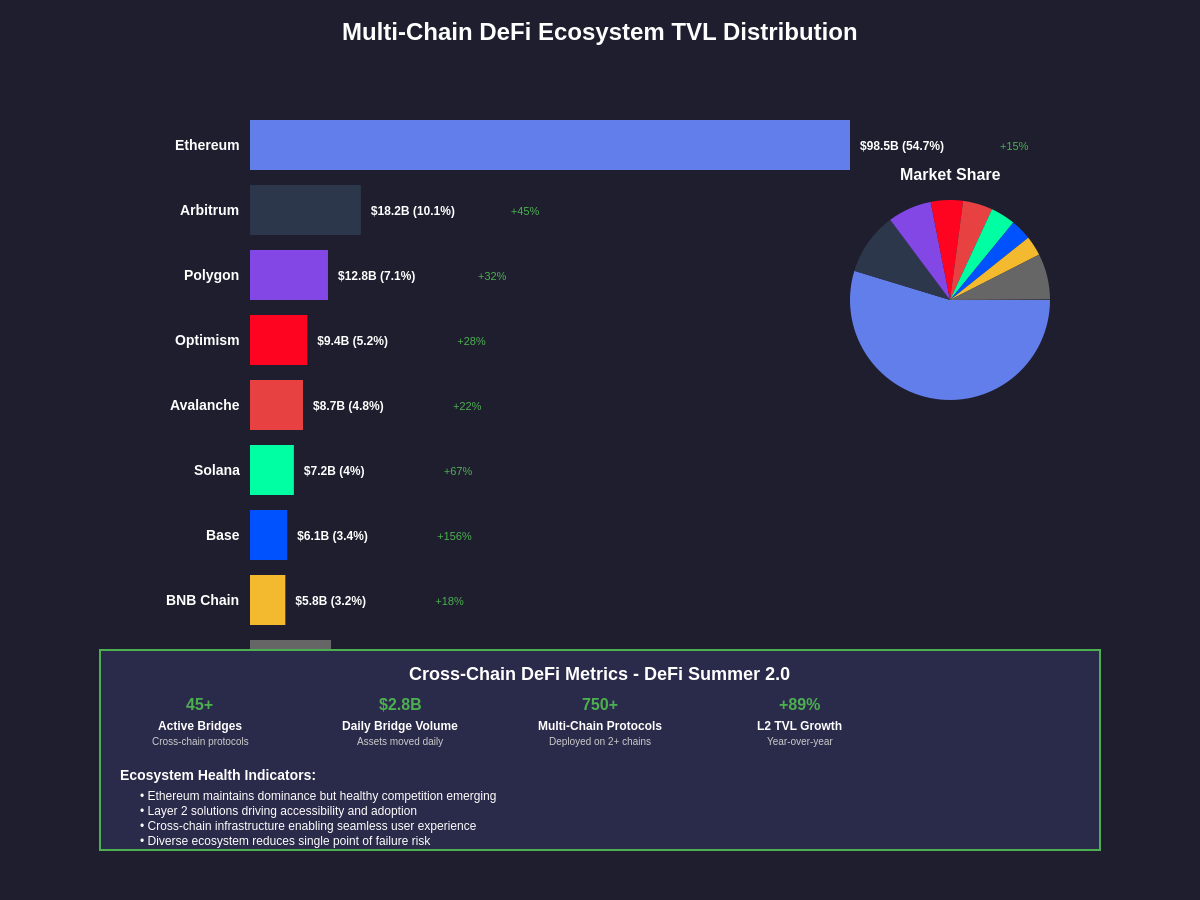
The expansion of DeFi beyond Ethereum has been one of the defining characteristics of this current growth phase. Alternative layer-1 blockchains like Solana, Avalanche, and Fantom have developed thriving DeFi ecosystems that offer unique advantages in terms of speed, cost, and functionality. This multi-chain evolution has increased overall ecosystem resilience while providing users with more options for their DeFi activities.
Cross-chain bridge technology has matured significantly, enabling more secure and efficient movement of assets between different blockchain networks. While bridge security remains an ongoing concern, the development of more robust bridging protocols has facilitated the growth of multi-chain DeFi strategies and increased overall ecosystem liquidity.
Layer-2 solutions have proven to be game-changers for DeFi accessibility and adoption. Protocols deployed on Arbitrum, Optimism, and Polygon offer near-instant transactions at minimal cost while maintaining compatibility with Ethereum-based tools and infrastructure. This scalability breakthrough has enabled new use cases that were previously impractical due to high transaction costs.
Institutional DeFi Infrastructure
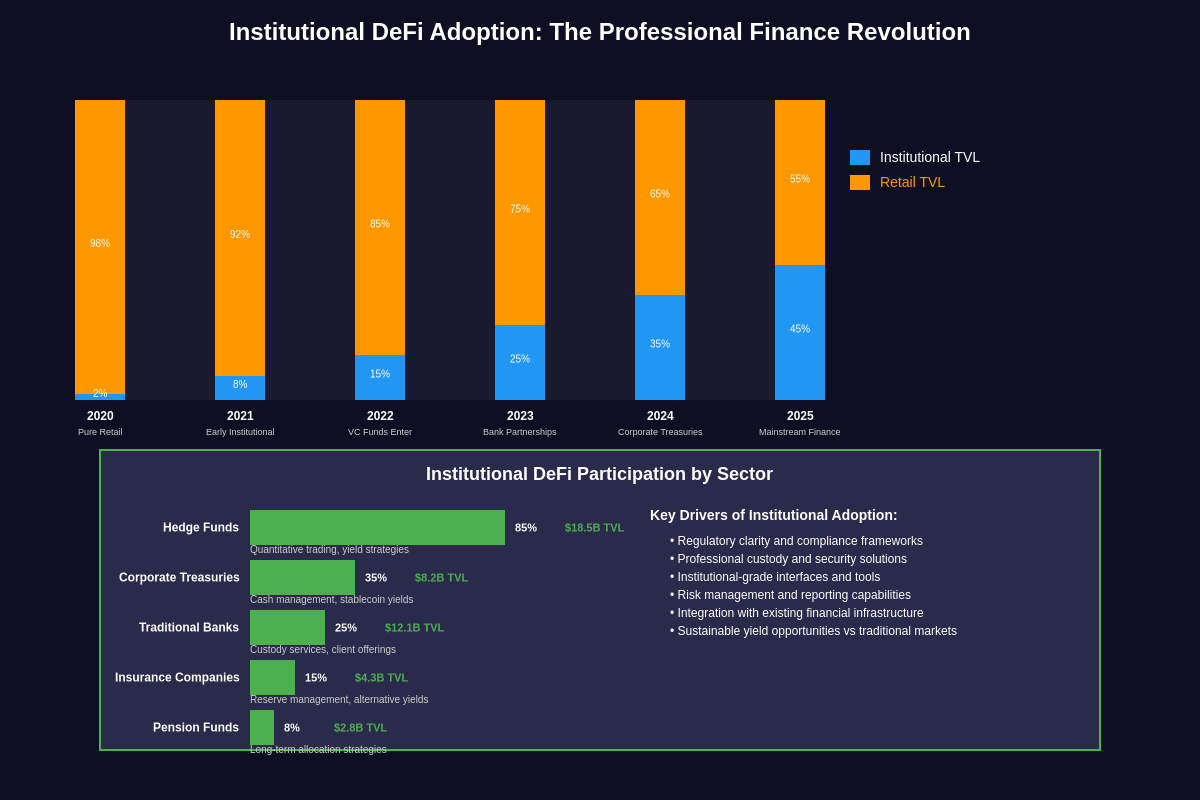
The development of institutional-grade DeFi infrastructure has been crucial for attracting traditional finance participants to the ecosystem. Custody solutions specifically designed for DeFi operations have emerged, offering the security and compliance features required by institutional investors while enabling participation in decentralized protocols.
Prime brokerage services for DeFi have developed that provide institutions with comprehensive portfolio management, risk monitoring, and compliance reporting capabilities. These services bridge the gap between traditional finance operations and DeFi participation, making it easier for institutions to integrate decentralized protocols into their existing workflows.
The emergence of DeFi-focused institutional trading platforms has provided professional traders with the tools and interfaces they require for sophisticated trading strategies. These platforms combine institutional-grade security and compliance with access to the deep liquidity and innovative products available in DeFi markets. Professional institutions monitor comprehensive DeFi market indicators and cross-protocol analytics to optimize their decentralized finance strategies.
Synthetic Assets and Derivatives Innovation
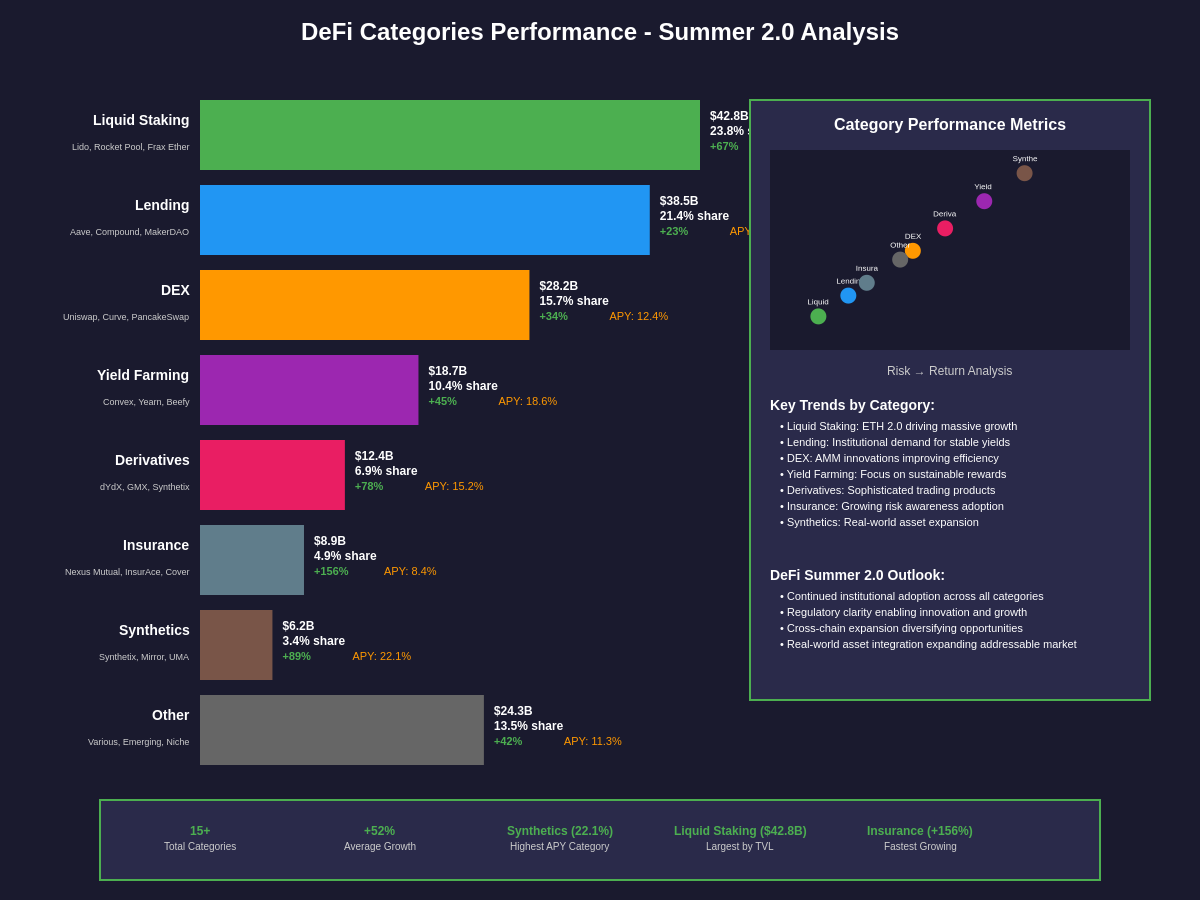
The synthetic assets sector within DeFi has experienced remarkable growth and innovation, with protocols like Synthetix leading the development of decentralized derivatives markets. These platforms enable the creation of synthetic exposure to virtually any asset, from traditional commodities and currencies to more exotic instruments, all without requiring direct ownership of the underlying assets.
Decentralized options and futures markets have reached new levels of sophistication, offering professional-grade derivatives trading capabilities that rival traditional finance platforms. These developments have attracted quantitative trading firms and hedge funds to DeFi, bringing additional liquidity and trading expertise to the ecosystem.
The creation of structured products within DeFi has opened new avenues for sophisticated investment strategies. Protocols now offer products like principal-protected notes, yield enhancement strategies, and complex derivatives that provide exposure to multiple underlying assets or strategies. These innovations have made DeFi attractive to more conservative investors who seek defined risk-return profiles.
Governance and Decentralized Autonomous Organizations
Protocol governance has evolved significantly from simple token voting to sophisticated governance frameworks that balance decentralization with effective decision-making. Many protocols have implemented delegation systems, governance minimization principles, and time-weighted voting mechanisms that improve the quality of governance decisions while maintaining community control.
The emergence of governance-as-a-service platforms has made it easier for new protocols to implement sophisticated governance systems without building everything from scratch. These platforms provide templates and tools for creating effective governance frameworks that incorporate best practices learned from earlier protocol experiments.
Decentralized autonomous organizations focused on DeFi investment and management have become major players in the ecosystem. These organizations pool capital from many participants and use decentralized governance to make investment decisions, creating new models for asset management that combine the benefits of traditional fund management with the transparency and accessibility of DeFi.
Future Outlook and Emerging Trends
The trajectory of DeFi Summer 2.0 suggests that the current growth phase is far from over, with several emerging trends likely to drive continued expansion of TVL and protocol innovation. The integration of artificial intelligence and machine learning into DeFi protocols promises to create more sophisticated risk management, yield optimization, and trading strategies that can adapt to changing market conditions in real-time.
Central bank digital currencies represent both an opportunity and a challenge for DeFi protocols. As CBDCs become more prevalent, DeFi protocols may need to adapt to incorporate these government-issued digital currencies, potentially opening new avenues for mainstream adoption while navigating increased regulatory scrutiny.
The development of privacy-preserving DeFi protocols using zero-knowledge proofs and other cryptographic techniques promises to address one of the significant limitations of current DeFi systems. These innovations could enable DeFi protocols to offer the privacy levels expected by institutional users while maintaining compliance with regulatory requirements.
Real-world asset tokenization represents perhaps the largest opportunity for future TVL growth, as the tokenization of traditional assets like real estate, commodities, and financial instruments could bring trillions of dollars in value to DeFi protocols. Early experiments in this area have shown promising results, suggesting that the boundary between DeFi and traditional finance will continue to blur.
Economic Impact and Market Implications
The growth of DeFi to current TVL levels has created significant economic impacts that extend far beyond the cryptocurrency ecosystem. The efficiency gains from automated market making, algorithmic lending, and programmable financial instruments have created new models for capital allocation that are being studied and adopted by traditional financial institutions.
The democratization of access to sophisticated financial instruments through DeFi has created new opportunities for individual investors and smaller institutions that were previously excluded from many financial markets. This increased access has the potential to create more efficient capital markets while reducing the advantages traditionally held by large financial institutions.
The innovation happening in DeFi has spurred competitive responses from traditional finance, with banks and other institutions developing their own automated trading systems, algorithmic lending platforms, and programmable financial products. This competition benefits consumers by driving innovation and reducing costs across the entire financial system.
Global Adoption and Regional Variations
DeFi adoption patterns vary significantly across different regions, influenced by local regulatory environments, financial infrastructure development, and economic conditions. Emerging markets have shown particularly strong adoption of DeFi protocols, often using them to access financial services that are unavailable or expensive through traditional banking systems.
The development of region-specific DeFi protocols that address local market needs and regulatory requirements has contributed to global adoption growth. These protocols often incorporate features like local currency support, compliance with regional regulations, and integration with existing financial infrastructure that make DeFi more accessible to local users.
Educational initiatives and developer programs have been crucial for driving adoption in new markets. Many successful DeFi protocols have invested heavily in education and community building, recognizing that sustainable growth requires users who understand the risks and benefits of decentralized finance.
Technology Infrastructure and Scalability Solutions
The infrastructure supporting DeFi has undergone massive improvements that have enabled the current growth phase. Advanced monitoring and analytics tools provide real-time insights into protocol performance, market conditions, and risk levels that help users make informed decisions about their DeFi activities.
The development of modular blockchain architectures and application-specific blockchains has created new possibilities for DeFi protocol design. These technological advances enable protocols to optimize for specific use cases while maintaining interoperability with the broader DeFi ecosystem.
Cross-chain communication protocols have reached new levels of sophistication, enabling complex multi-chain strategies and reducing the barriers between different blockchain ecosystems. These developments have increased overall ecosystem liquidity while providing users with more options for optimizing their DeFi activities. Sophisticated investors leverage advanced multi-chain DeFi analytics and portfolio tracking to maximize returns across diverse protocol ecosystems.
DeFi Summer 2.0 represents a fundamental maturation of decentralized finance from an experimental technology to a core component of the global financial system. The achievement of new all-time highs in Total Value Locked reflects not just increased capital allocation to DeFi protocols, but the growing recognition that decentralized finance offers genuine advantages over traditional alternatives in many use cases. As institutional adoption continues to accelerate and technological infrastructure continues to improve, the current growth phase appears positioned to continue for the foreseeable future.
The evolution from speculative yield farming to sustainable economic activity marks a crucial transition that has established DeFi as a permanent and growing component of the financial landscape. With continued innovation in areas like real-world asset tokenization, cross-chain interoperability, and institutional infrastructure, the foundations are in place for continued growth that could see DeFi TVL reach even more ambitious milestones in the coming years.
Disclaimer: This article is for educational and informational purposes only and should not be construed as financial advice. DeFi protocols carry significant risks, including smart contract vulnerabilities, impermanent loss, and potential total loss of capital. The high yields offered by many DeFi protocols often come with commensurate risks that may not be immediately apparent. Always conduct your own research, understand the risks involved, and consult with qualified financial advisors before participating in DeFi protocols. The author and publisher are not responsible for any financial losses that may occur from acting on the information provided in this article.